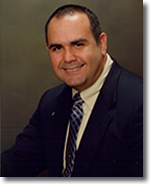
It amazes me that there are people still thinking that ALL the community pharmacists do is count and sell pills. Briefly, when a prescription is handed in, the pharmacy technician screens the patient and enters the prescription information. A pharmacist then reviews the information for accuracy and then, in conjunction with your other medications, decides its appropriateness. After which, the medication gets billed to the patient’s insurance (if they have one), the label prints, the medication is filled by a technician (or pharmacist), and then the finished product is checked by the pharmacist before sale. As you can see, there are many steps along the way to a completed product IF there are no issues with the prescription order.
One of the most important steps occurs when the pharmacist checks the prescription for accuracy. There are studies which claim that 47-49% of prescription errors occur when the prescription is written. That means that the drug, its dosing, directions or quantity each have the potential to be incorrect, and the pharmacist is trained to catch those errors. Even though e-prescribing has reduced some of these ordering errors, USER error or device programming still creates headaches for physicians when attempting to order medications for patients.
Another important step is reviewing the medication against the patient’s other medications for appropriateness. In the age of multiple providers, both medical and pharmacy, patients are exposing themselves to more harm due to the fragmentation of medication histories and medical information. That means that one provider or pharmacy will not know what another provider or pharmacy is doing in the patient’s care because of “shopping around” for best pricing, a second opinion, or specialty treatment.
While these two steps are taking place in the medication fulfillment process seemingly unnoticed, the public never sees them happening and therefore perceives that the pharmacist is not doing anything noteworthy. What the public sees and portrayed in the media are pharmacists counting out medication, putting it in bottles and labeling them.
In addition, because pharmacists are so well trained to review medications and catch these errors (with the help of technology), the insurance community is slowly realizing that pharmacists can save them a truckload of money by performing medication therapy management (MTM) services. These services improve patient care, minimize hospitalizations, improve medication adherence and ultimately the patient’s health. Unfortunately, the insurance companies want these MTM services for free or for a minimal charge and are resisting pharmacist reimbursement for them. This resistance to reimburse pharmacists for their skills increases the insurance companies’ profits, but the patient never sees these savings and continues to pay higher and higher premiums.
This is just a brief overview of what goes on “behind the scenes” at the pharmacy. I hope I have shed some light on a little of what pharmacists do on a daily basis. If you are interested in learning more about MTM services to help reduce your medication expenses, seek out a nationally certified MTM provider like myself or stop by the APhA website.
Until next time, stay healthy.
Dion

